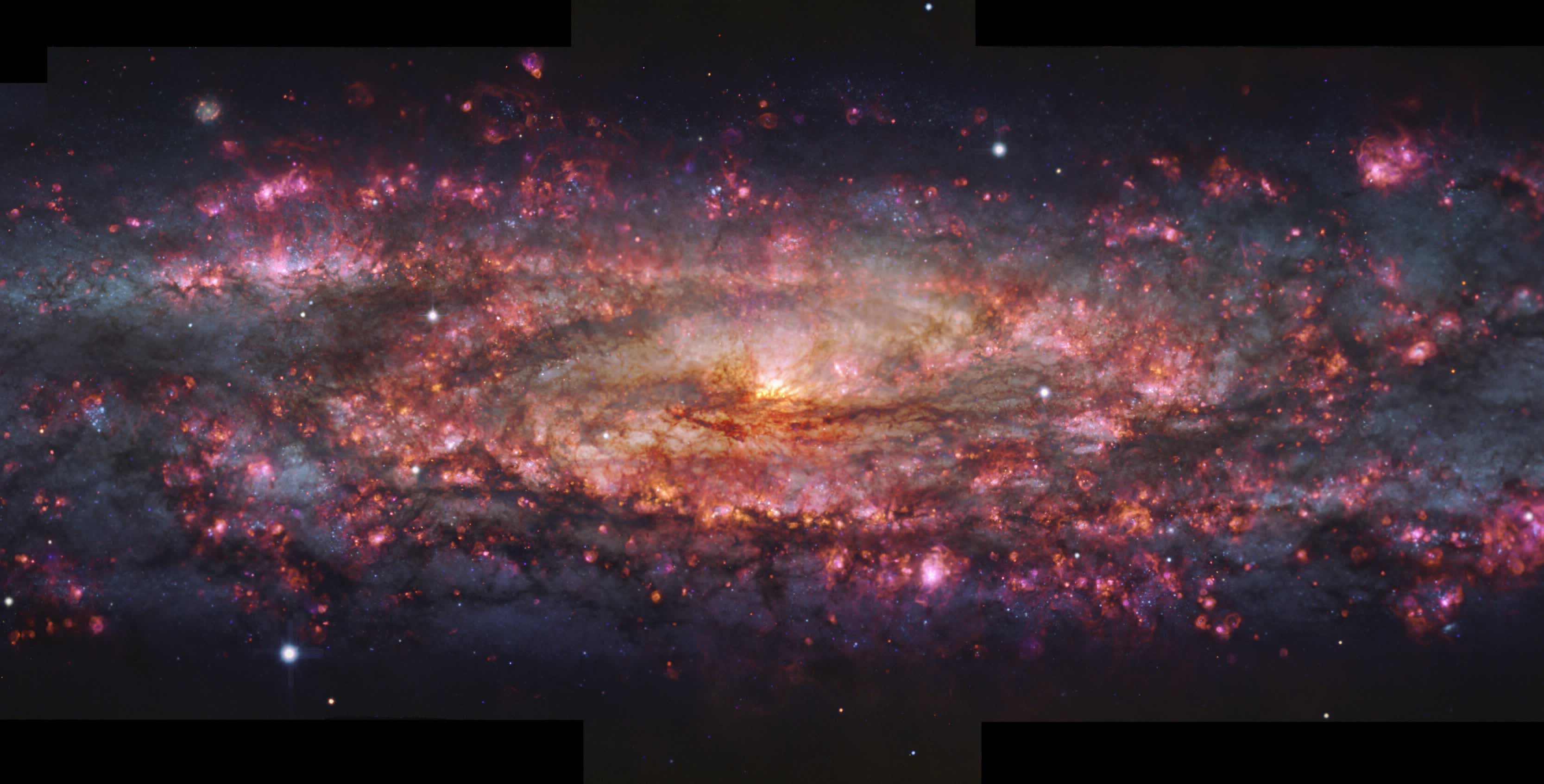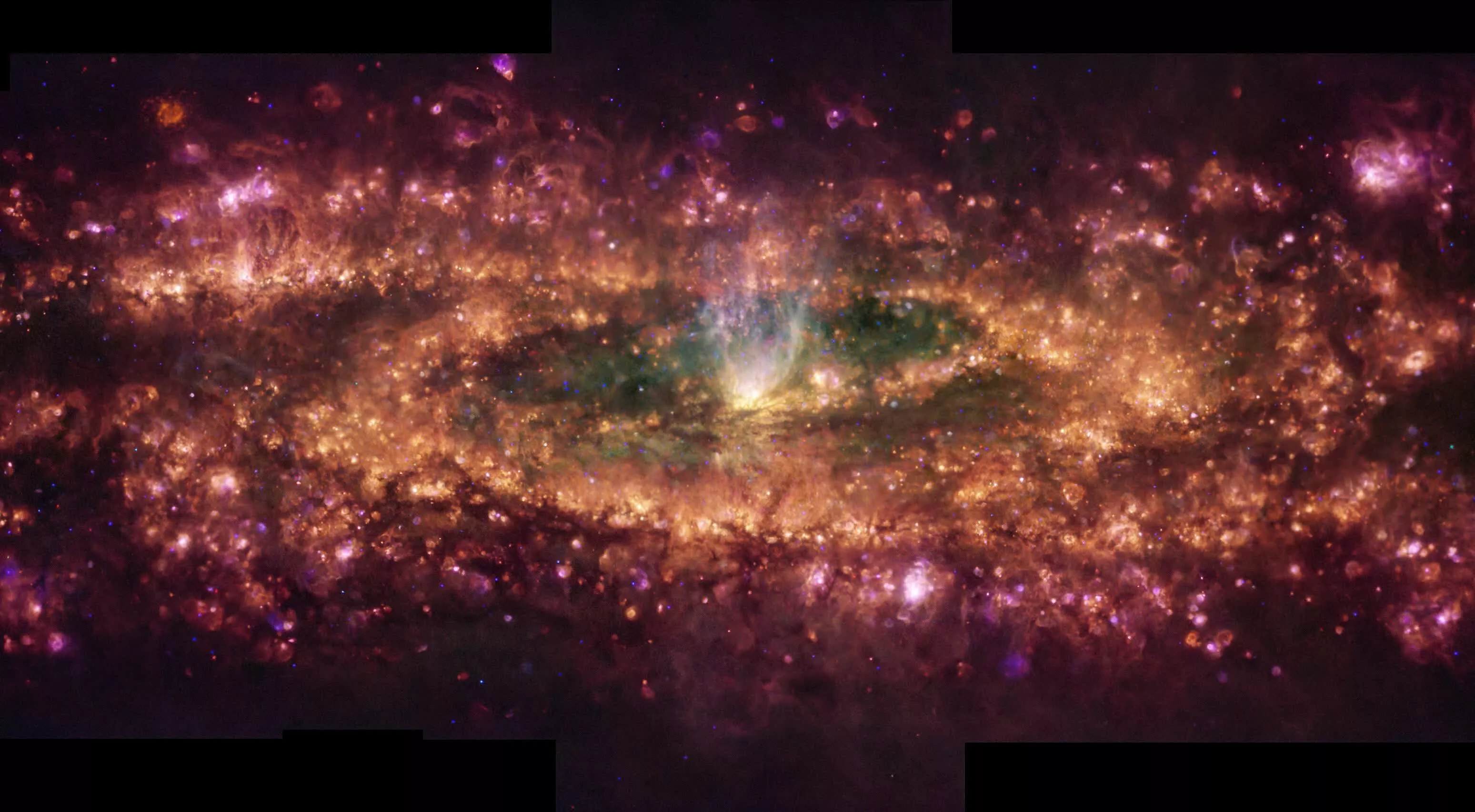Stunning: Astronomers have captured the most detailed image ever of the Sculptor galaxy, an incredibly complex system located roughly 11 million light-years from Earth. The composite was created using the European Southern Observatory's Very Large Telescope, and is comprised of over 100 exposures captured during a 50-hour marathon observation session.
The Sculptor galaxy, also known as NGC 253, is similar in size, mass, and shape to our own spiral Milky Way. ESO researcher Enrico Congiu said the galaxy is in the "sweet spot," meaning it is close enough that we can resolve its internal structure to study it in great detail, yet big enough that we can still see it as a complete system.
The new image focuses on a 65,000 light-year-wide section of the 90,000 light-year-wide galaxy. The team's initial analysis revealed roughly 500 planetary nebulae, which are regions of dust and gas given off by dying stars. According to study co-author Fabian Scheuermann, they typically only see around 100 such detections per galaxy.
Astronomers can use data from planetary nebulae to measure distance. "Finding the planetary nebulae allows us to verify the distance to the galaxy – a critical piece of information on which the rest of the studies of the galaxy depend," said study co-author Adam Leroy, a professor at The Ohio State University.
Researchers will also be able to use the data to study how gas flows, changes its composition, and forms stars across the wide-reaching galaxy. Congiu said it remains a mystery how such a seemingly small process can have such a big impact on a galaxy whose size is so large.
The Sculptor galaxy was first discovered in 1783, and has been observed many times since. One of the most detailed observations occurred in 1998 courtesy of the Hubble Space Telescope. The galaxy is so bright and large that it can often be seen through binoculars under the right conditions, and is in the same category as the Andromeda galaxy in terms of amateur astronomer friendliness.

